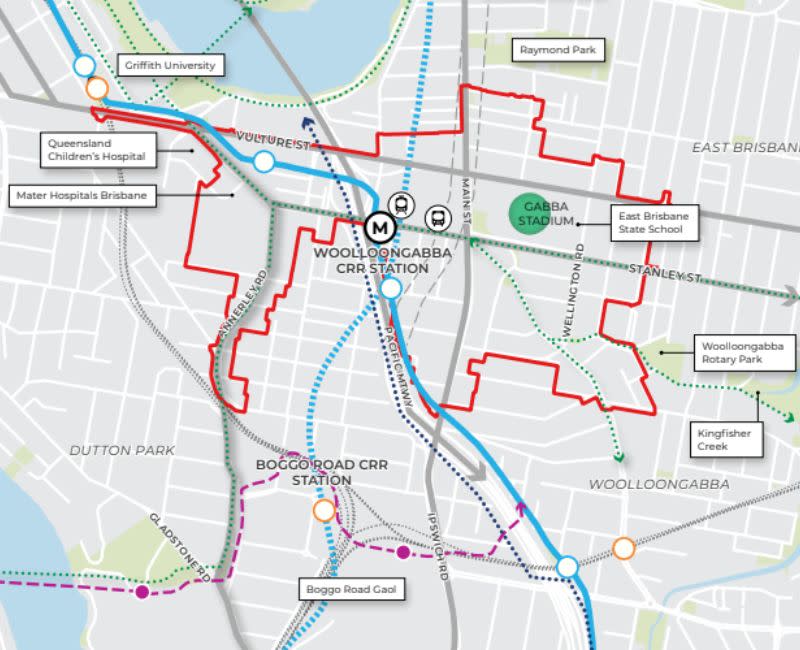Woolloongabba Planning Reset to Deliver 16,000 Homes

A revised blueprint for the Woolloongabba Priority Development Area has been greenlit by the Queensland Government, paving the way for more than 16,000 new homes and a renewed push to fast-track housing delivery in Brisbane’s inner south.
The overhaul follows disappointing results from the original scheme, which attracted just three development applications despite being positioned as a cornerstone of the city’s Olympic-era renewal strategy.
The new framework—to be released for public consultation this year—broadens allowable densities, streamlines assessment processes and removes several planning bottlenecks that developers had indicated made projects financially unviable.
The 106ha precinct, which includes Woolloongabba, East Brisbane and parts of Kangaroo Point, was first declared a Priority Development Area in 2023 under the former Palaszczuk government.
The original plan envisaged up to 14,000 homes for about 24,000 residents by 2032, supported by upgrades to transport, public space and community facilities around the future Gabba Stadium.
However, the Crisafulli Government’s 100-Day Review of the Gabba and the former GoPrint site identified “significant delivery constraints”, prompting it to reset the framework to “unlock housing supply while maintaining livability and local character”.
Minister for State Development and Infrastructure Grace Grace said the revised plan would “cut red tape, improve feasibility and deliver more diverse housing options close to jobs, services and transport”.
“This is about ensuring Woolloongabba becomes a connected, liveable community, not just a stadium precinct,” Grace said.
“We’ve listened to industry feedback and designed a plan that will get homes built.”

The new scheme increases development yields in key corridors surrounding Cross River Rail’s Gabba Station, while maintaining lower building heights near established residential areas. It also introduces incentives for build-to-rent projects, affordable housing and public realm improvements.
The Government said the framework would deliver more than 16,000 homes over the life of the PDA—an increase of around 2000 homes on the previous plan—and that “a significant proportion” would target middle-income households.
Property Council Queensland executive director Jess Caire welcomed the reset, describing it as a “pragmatic and responsive move” that acknowledged the delivery challenges developers face in a high-cost construction environment.
“Industry has been calling for greater flexibility and faster assessment pathways,” Caire said. “It’s encouraging to see government respond to those concerns while keeping the focus on housing outcomes.”
The updated Woolloongabba PDA will go on public exhibition this year, with feedback to inform a final development scheme expected to be adopted in 2026.
If endorsed, the plan will underpin one of the state’s most significant urban regeneration programs, transforming a key Olympic precinct into a high-density, mixed-use community anchored by major transport infrastructure.
“Woolloongabba is poised to become a model for how Queensland can deliver homes and jobs around major public transport hubs,” Grace said. “This plan ensures we’re ready to meet that challenge.”













